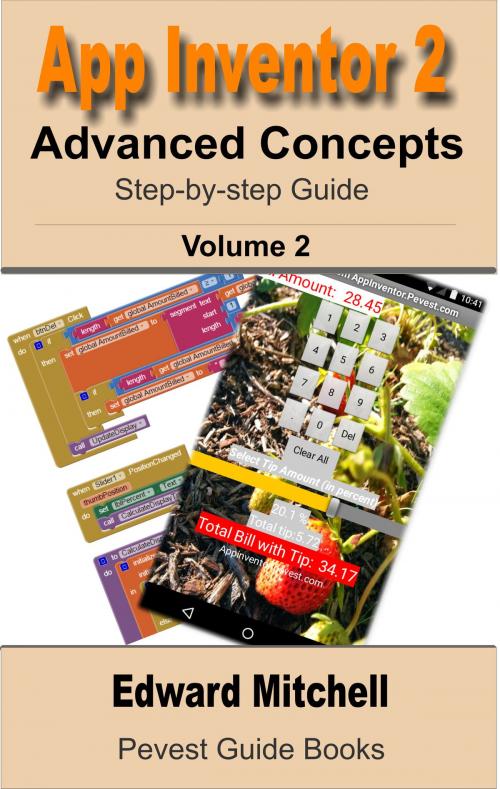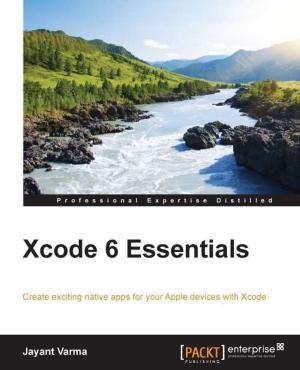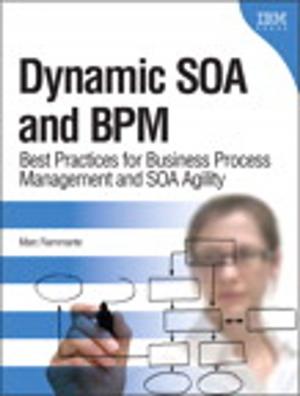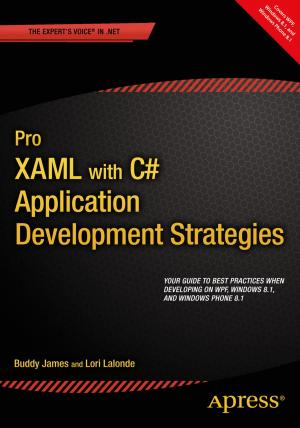App Inventor 2: Advanced Concepts
Advanced Concepts including TinyDB
Nonfiction, Computers, Application Software, Educational Software, Programming, Software Development| Author: | Edward Mitchell | ISBN: | 1230000642033 |
| Publisher: | Pevest.com | Publication: | September 1, 2015 |
| Imprint: | Language: | English |
| Author: | Edward Mitchell |
| ISBN: | 1230000642033 |
| Publisher: | Pevest.com |
| Publication: | September 1, 2015 |
| Imprint: | |
| Language: | English |
MIT App Inventor 2 is a fast and simple way to create custom Android apps for smart phones or tablets. Volume 2 in the series introduces debugging methods, explains additional controls not covered in Volume 1, introduces “agile” methods for developing a real world app, and provides sample code for using the TinyDB database.
This App Inventor 2 series is targeted at adult learners (high school and up). App Inventor 2 provides a simplified “drag and drop” interface to layout your app’s screen design. Then implement the app’s behavior with “drag and drop” programming blocks to quickly assemble a program in a graphical interface.
Volume 1 of this series covered the basics of the App Inventor user interface Designer and the Blocks programming editor, plus basic “blocks” programming concepts and tools for arithmetic, text processing, event handling, lists and other features. Volume 2 builds upon Volume 1 to provide tips on debugging programs when the apps work incorrectly, how to us hidden editing features, and how to install your own apps on to your phone or tablet for general use. Code samples are provided for using the Notifier component for general use or for debugging, for user interface control tricks such as buttons that change color continuously or implementing the missing “radio buttons” component, using ListPicker and Spinner for list selections, and using the WebViewer to display web pages in your app. The book includes a large section on designing and building a sample real world application and finishes with a chapter on using the TinyDB database.
Chapters
Introduction
Chapter 1 - App Inventor Tips
Chapter 2 - Debugging App Inventor Programs
Chapter 3 - User Interface Control Tricks
Chapter 4 - Designing and Building a Real World Application
Chapter 5 - Tip Calculator Version 2
Chapter 6 - Tip Calculator Version 3
Chapter 7 - Tip Calculator Version 4
Chapter 8 - Tip Calculator Version 5
Chapter 9 – Using the TinyDB database
About the Author
Edward Mitchell has worked in software development, project and program management in companies from Silicon Valley to Microsoft Corporation. He has taught management and computer information systems courses at Gonzaga University and at a community college. He earned a B.S. in information and computer science from the University of California, an M.B.A. from Gonzaga University (2001), and an M.S. in software engineering from Regis University (2012). His interests include methods of improving the efficiency and effectiveness of software development including better tools (like App Inventor), software development and organizational process improvements that can lead to building the right solutions, faster and more reliably, and teaching others about software development concepts. In addition to this guide, he has written about a dozen books on technical subjects and has interests spanning 3D still and video photography to flying a hovercraft.
Please visit the book’s web http://appinventor.pevest.com for updated content, tutorials and links to more information.
E-Books in this Series:
• App Inventor 2 Introduction, Volume 1.
• App Inventor 2 Advanced Concepts, Volume 2
• App Inventor 2 Databases and Files, Volume 3
MIT App Inventor 2 is a fast and simple way to create custom Android apps for smart phones or tablets. Volume 2 in the series introduces debugging methods, explains additional controls not covered in Volume 1, introduces “agile” methods for developing a real world app, and provides sample code for using the TinyDB database.
This App Inventor 2 series is targeted at adult learners (high school and up). App Inventor 2 provides a simplified “drag and drop” interface to layout your app’s screen design. Then implement the app’s behavior with “drag and drop” programming blocks to quickly assemble a program in a graphical interface.
Volume 1 of this series covered the basics of the App Inventor user interface Designer and the Blocks programming editor, plus basic “blocks” programming concepts and tools for arithmetic, text processing, event handling, lists and other features. Volume 2 builds upon Volume 1 to provide tips on debugging programs when the apps work incorrectly, how to us hidden editing features, and how to install your own apps on to your phone or tablet for general use. Code samples are provided for using the Notifier component for general use or for debugging, for user interface control tricks such as buttons that change color continuously or implementing the missing “radio buttons” component, using ListPicker and Spinner for list selections, and using the WebViewer to display web pages in your app. The book includes a large section on designing and building a sample real world application and finishes with a chapter on using the TinyDB database.
Chapters
Introduction
Chapter 1 - App Inventor Tips
Chapter 2 - Debugging App Inventor Programs
Chapter 3 - User Interface Control Tricks
Chapter 4 - Designing and Building a Real World Application
Chapter 5 - Tip Calculator Version 2
Chapter 6 - Tip Calculator Version 3
Chapter 7 - Tip Calculator Version 4
Chapter 8 - Tip Calculator Version 5
Chapter 9 – Using the TinyDB database
About the Author
Edward Mitchell has worked in software development, project and program management in companies from Silicon Valley to Microsoft Corporation. He has taught management and computer information systems courses at Gonzaga University and at a community college. He earned a B.S. in information and computer science from the University of California, an M.B.A. from Gonzaga University (2001), and an M.S. in software engineering from Regis University (2012). His interests include methods of improving the efficiency and effectiveness of software development including better tools (like App Inventor), software development and organizational process improvements that can lead to building the right solutions, faster and more reliably, and teaching others about software development concepts. In addition to this guide, he has written about a dozen books on technical subjects and has interests spanning 3D still and video photography to flying a hovercraft.
Please visit the book’s web http://appinventor.pevest.com for updated content, tutorials and links to more information.
E-Books in this Series:
• App Inventor 2 Introduction, Volume 1.
• App Inventor 2 Advanced Concepts, Volume 2
• App Inventor 2 Databases and Files, Volume 3















